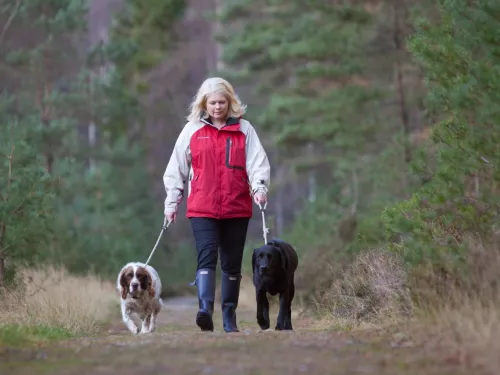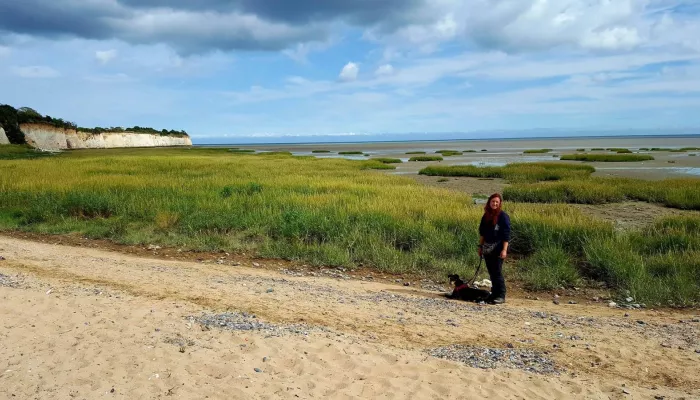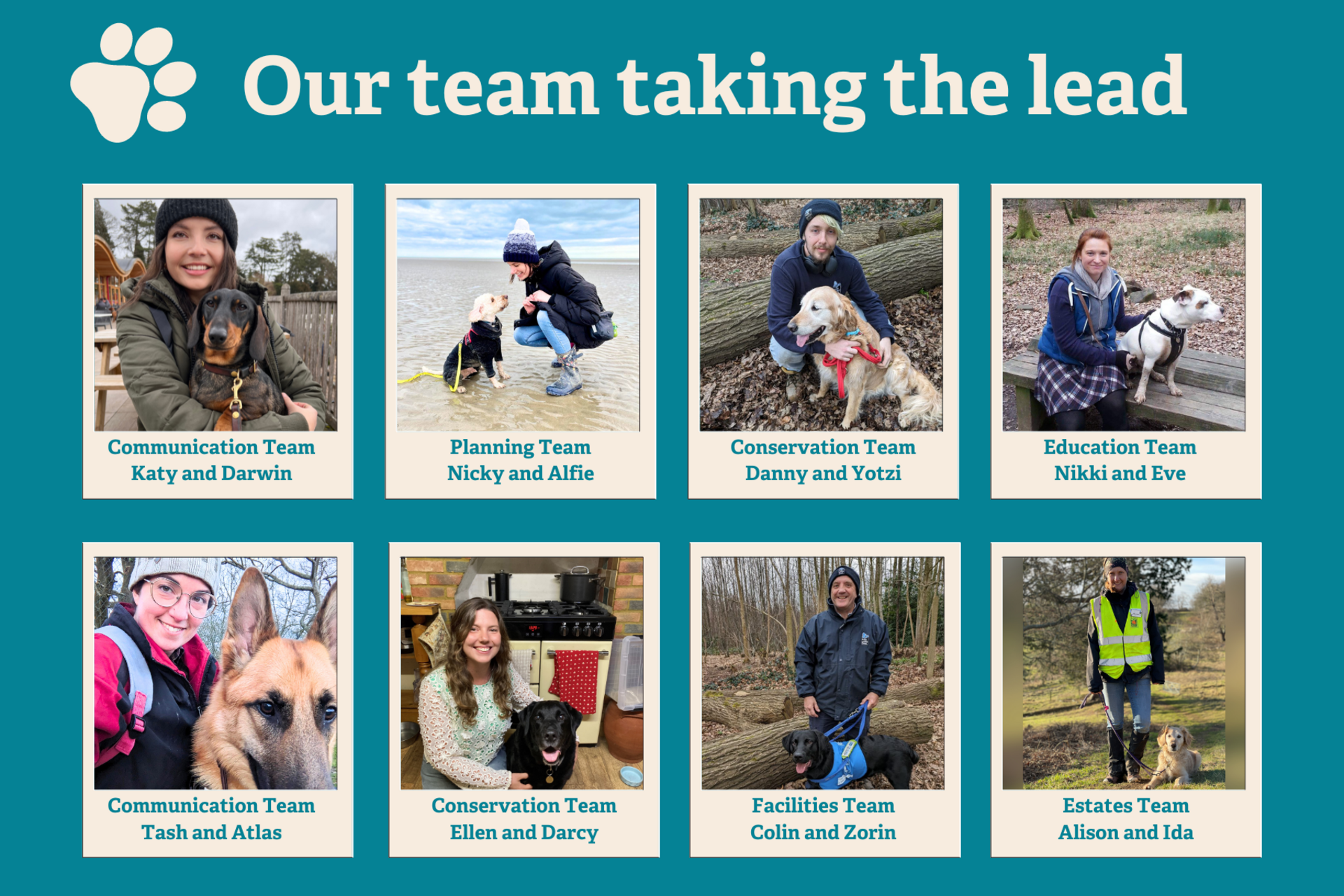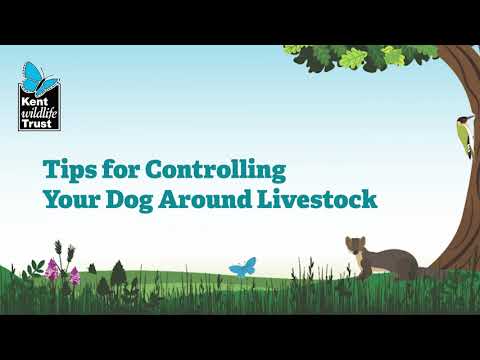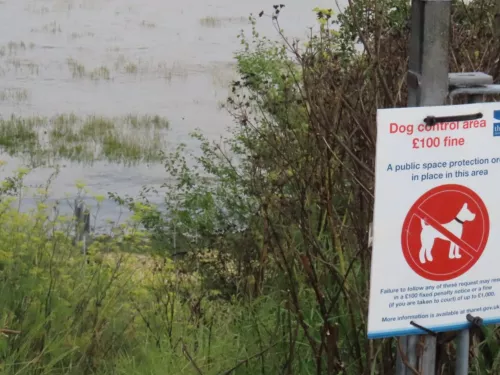Dogs can be a threat to sheep, cows and other grazing livestock – with regular problems reported on land owned or managed by Kent Wildlife Trust.
In one year alone several incidents across our reserves resulted in an injury to a member of staff and 13 sheep killed by out of control dogs. Many other sheep were found with bite injuries. Cattle sometimes are also injured by dogs and when defending themselves against dogs, with bites and broken horns.
Our livestock are all prey animals, they instinctively expect that an animal like a dog would want to hunt them. It doesn't matter that your dog is feeling playful, or even anxious, they will see running and barking as a sign that your dog wants to attack them. For all our animals this leads to fear and anxiety that changes their behavior and the way they interact with the nature reserve. This means they feed, sleep and interact with each other differently than they would in the wild where the level of predator interaction would be much lower. In some cases this can have noticeable affects on the biodiversity they are there to help create, reducing our chances of success in protecting the wildlife.
Many of our sheep breeds in particular are hill or mountain sheep. They act very differently from the typical commercial white sheep we are all used to seeing. Those white sheep flock together as a safety mechanism against predation. In the mountain habitats where our sheep have evolved, there is not enough room for this to be effective. The terrain is too rough. Instead, they scatter, grazing and browsing in small groups, and when threatened they starburst in all directions and try to hide in nooks and crannies.
They love eating bramble and woody vegetation so they are often out of sight in trees and bushes. They don't keep their lambs with them. They hide their lambs in little groups, in tree hollows, for instance, go out to forage and then return to feed them. This is an adaption to the harsh mountain climate. However, all this means that sometimes people feel it is ok to let their dog off the lead around the sheep because they think they either aren't in the field that we've signed or that they have left the flock behind them. This is when accidents happen as the dog can smell very easily what you can't see.
For cattle, if they can't move far enough away from the dog to feel safe again, this can lead to them retaliating against the dog that is 'attacking' them. All of our cattle are temperament tested as a part of their daily welfare checks, with slight changes in attitude and confidence toward the public noted and if necessary actioned. However, if a dog does attack them, any of them may defend themselves. Horses will also kick and bite to defend themselves if they feel unable to escape a running or barking dog.
Dog owners can help wildlife if they:
- Keep dogs on short leads if you can't depend on them to stay close to you and always around vulnerable sheep and goats
- Keep dogs as far away from livestock as possible. Adjusting their route to use another path or field if their dog isn't calm around livestock.
Top tips
We always recommend 10m as the minimum safe distance for the public but if you have a dog with you, it's best to make that distance even bigger. Keep an eye on the animals. If they are continuing to graze or rest then you are far enough away. If they stop what they are doing to turn and look at you, or if they start moving away, you are too close and causing them to be wary, or even fearful. Give them more room by adjusting your heading or turning back and choosing a different path.
Train your dog to focus on you with a 'watch me' cue or a silent toy as you move past so they aren't staring, lunging or barking at the animals. You can use this for any wildlife too. Placing your dog on the opposite side of you to the animals often helps to calm a nervous dog.
Avoid using nature reserves if walking large groups of dogs, particularly with livestock as packs are inherently more scary to animals than solitary hunters and it's harder to keep each animal under calm control if something were to go wrong.
Only if the large animals go for your dog, should you let it off the lead to escape, as it can run faster and turn sharper than most large animals. Some people believe their dog is safer off lead around large animals but this is not the case. Allowing the dogs to move naturally around the animals tends to lead them to their natural hunting and stalking behaviour which makes the cattle and horses more likely to feel the need to defend themselves.
Keeping them at heel and moving parallel and past a group of grazing animals instinctively signals that the dog is just moving through the space and not looking for it's next meal.
